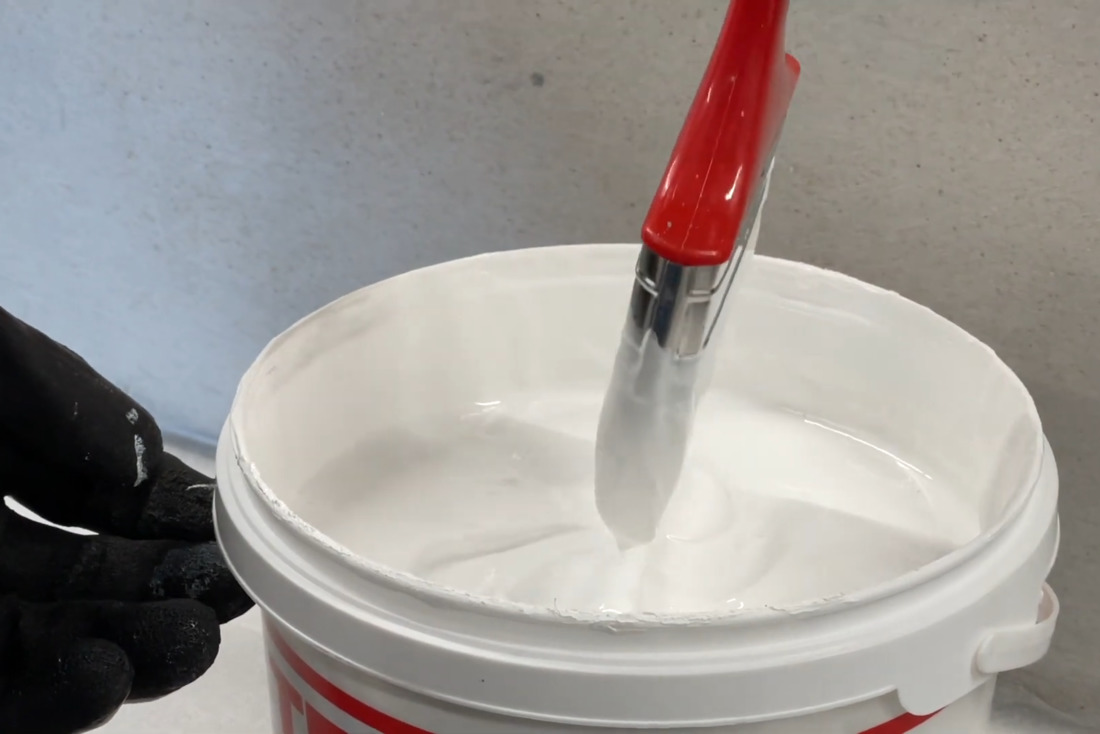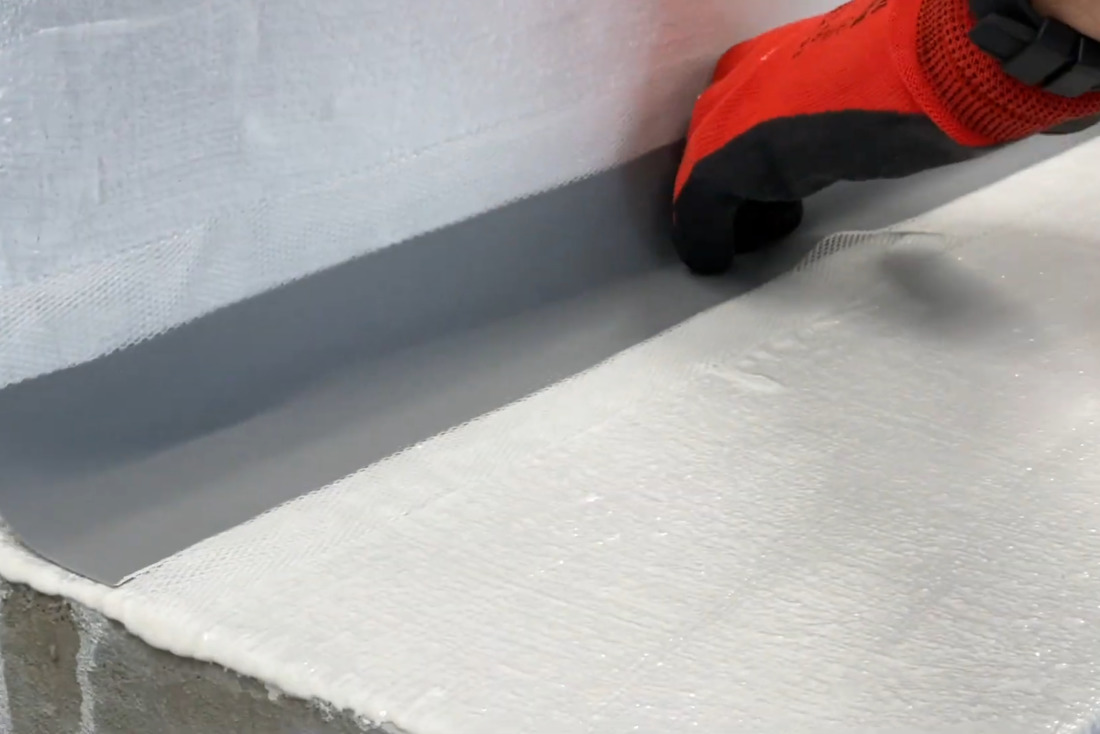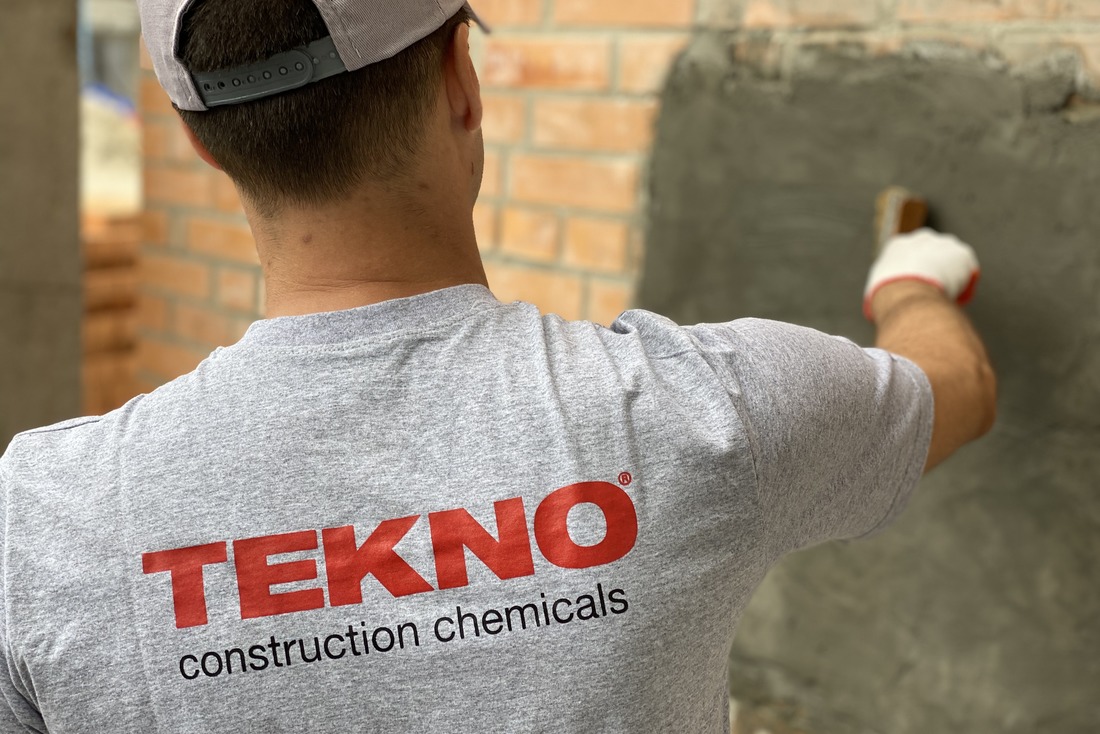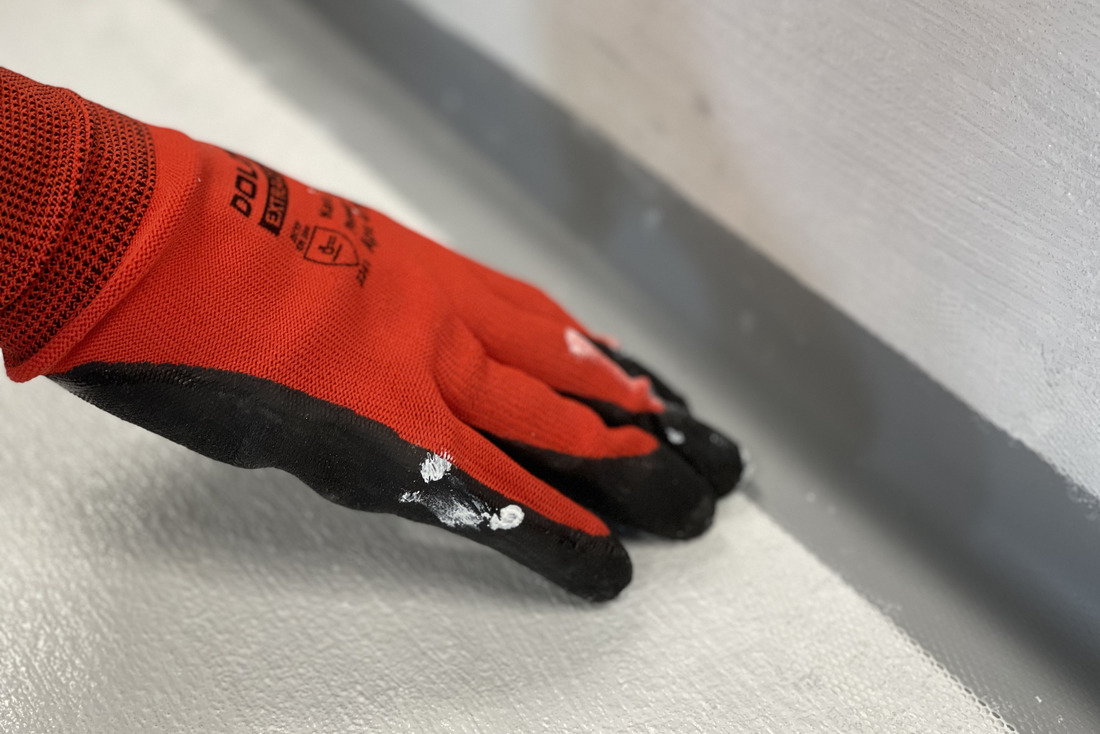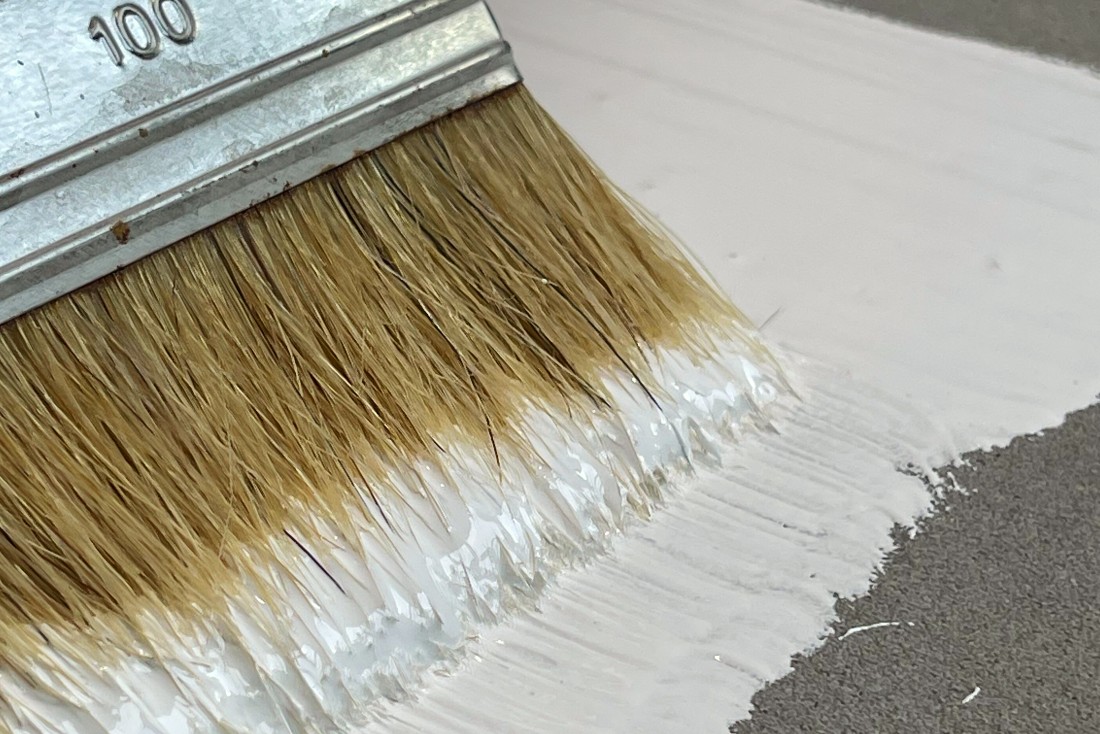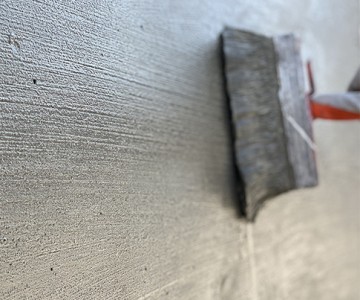Teknomer 300 is an one component elastic polymer acrylic waterproofing compound.
Application areas:
- For water tanks and swimming pools
- For bathrooms, balconies and other rooms with high humidity
- For surfaces made of reinforced concrete, galvanized metal, polyurethane foam coatings, PVC cornices
Properties of waterproofing:
- Retains elasticity at low temperatures
- Does not crack
- It has good adhesion
- Prevents carbonation in concrete
- Easy to use. It can be applied with a brush or roller.
- The surface covered with Teknomer 300 can be painted or finished with tile materials
| Colour |
White |
| Packaging |
Bucket 3 kg |
| Expiration date |
12 months in a dry environment in a closed package |
| Commissioning |
14 days |
| Drying time of the layer |
5 hours |
| Expenditure |
1.53 kg/m2 (with a thickness of 1 mm) |
| Adhesive strength |
> 1.0 N/mm2 |
| Water penetration (TS EN 1062-3) |
< 0,1 kg/(m2.h) |
| Water vapor penetration (TS EN ISO 7783-2) |
< 0,6 kg/(m2.h) |
| Thermal stability |
- 40 °C - + 80 °C |
| Penetration into cracks |
2.5 mm |
| Elasticity |
300 % |
| Fire resistance |
Ds1d0 |
- Before applying the material, the surface should be cleaned of any types of oil, rust, detergents, dirt and other substances that prevent setting.
- If there are cracks or other damages on the surface, they must be previously repaired with Teknorep repair solutions. Use Tekomer 300 3-4 days after surface repair.
- You should also determine the water pressure. Teknomer 300 is resistant to positive water pressure. If the water pressure is negative, do not use this waterproofing.
- On the surface that will be laid with tiles, you should work out every corner with the help of Teknomer pah bandi tape.
- Teknomer 300 should be applied to the surface with a brush or roller. Each next layer should be applied perpendicular to the previous one.
- The layer is considered dried when it ceases to be imprinted on the fingers.
- When applying waterproofing to the screed, it is necessary to use a waterproofing grid between the layers.
- Before using the compound, it is necessary to mix it for at least 5 minutes.
- The compound can be used as a primer. In this case, water should be added to the compound in a ratio of 1:1.
Notes:
- After applying the waterproofing make sure that direct sunlight and precipitation do not fall on the surface, and also do not use the material at temperatures above + 35 ˚С and below + 3 ˚С.
- After 3 days after applying the waterproofing, tiles or ceramics should be laid or plaster or screed should be applied to protect against all kinds of damage, scratches and bumps.
- Work should be carried out in compliance with safety and hygiene standards, using a mask and glasses.
- The tools and equipment used must be washed immediately after use.
1. How to protect the walls from moisture?
To protect the walls from moisture, it is best to use coating waterproofing materials, for example, acrylic. A huge advantage of Teknomer 300 acrylic mastic is that it is already ready for application, and this greatly facilitates waterproofing work.
2. Do I need to waterproofing concrete?
Despite all the strength characteristics of concrete, it must be waterproofing. After all, if moisture penetrates into the pores of concrete, it will begin to collapse faster.
3. Do I need to waterproofing the walls in the bathroom?
The bathroom is a room with high humidity, so waterproofing is definitely necessary here. For bathrooms, it is recommended to use Teknomer 300 acrylic mastic. It has good adhesion, prevents carbonation in concrete and is very easy to use.
4. What is the best way to make waterproofing in the bathroom?
Waterproofing in the bathroom can be done with both acrylic and polymer cement waterproofing mixture. The main thing is to choose a non-toxic material, for example, Teknomer 300, which can be used indoors.
5. How to dilute acrylic mastic?
When using acrylic mastic as waterproofing, it is not necessary to dilute it. But when using the material as a primer, you should mix acrylic mastic with water in a ratio of 1:1.



